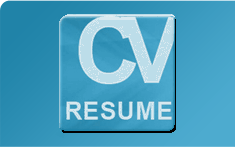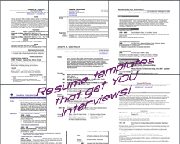
Chronological resume
How to make a CV-Resume
Resume cover letter
Personal Branding
Chronological resume
Habitually used resume format that does not always make the main target easier: TO OBTAIN AN INTERVIEW
The academic education (including masters and seminaries) and the experience appear in inverse chronological order, beginning by the present or last work and later the previous ones, and finishing with the studies:
Disadvantages of this format: it shows the periods of inactivity (months, years) and/or the very frequent changes of work. This often makes the candidate cover these spaces with irrelevant information for the position.
It emphasizes the person’s progression in work: promotion and increase of responsibilities are reflected, which has the disadvantage of showing if a person, although very effective in his or her work and satisfied with their role, has not ascended or taken more responsibilities.
When to use the chronological resume
If you have a good professional experience.
If you haven’t had periods without work.
If you have not changed jobs much.
If you are looking for work in the same type of sector.
If you have worked in an important company and you think that this represents "a good calling card".
Advantages:
The format is traditional and accepted by most of the selection departments.
Easy to read and understand.
It shows your job stability.
It reflects your increase of responsibilities and/or promotion.
It emphasizes the type of position and the companies in which you have worked.
It describes your roles and achievements.
Disadvantages:
It emphasizes your change of company.
It may focus too much on your age.
It may show a lack of recycling or updating training.
It reflects the gaps in work activity.
Other resume format
